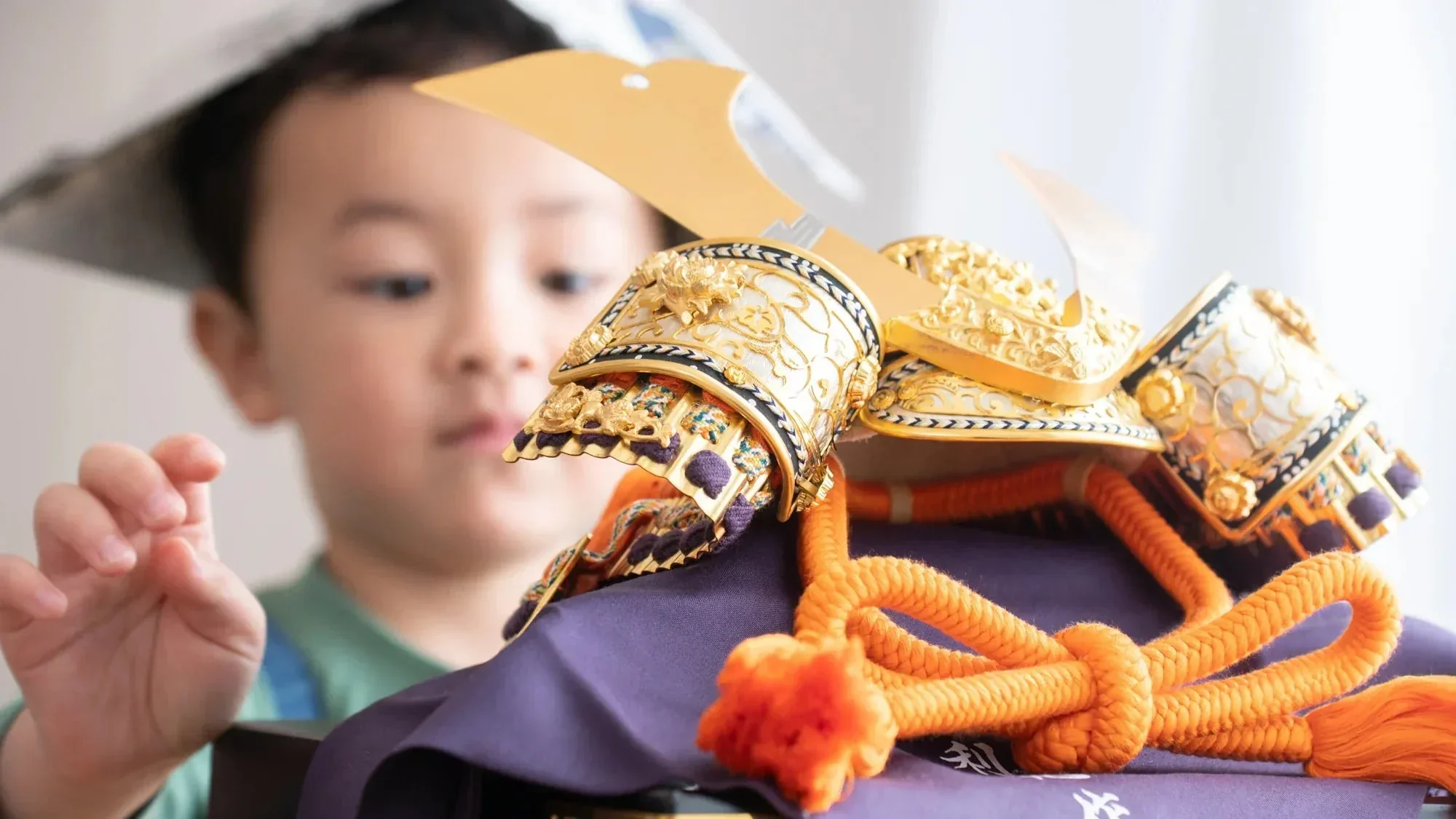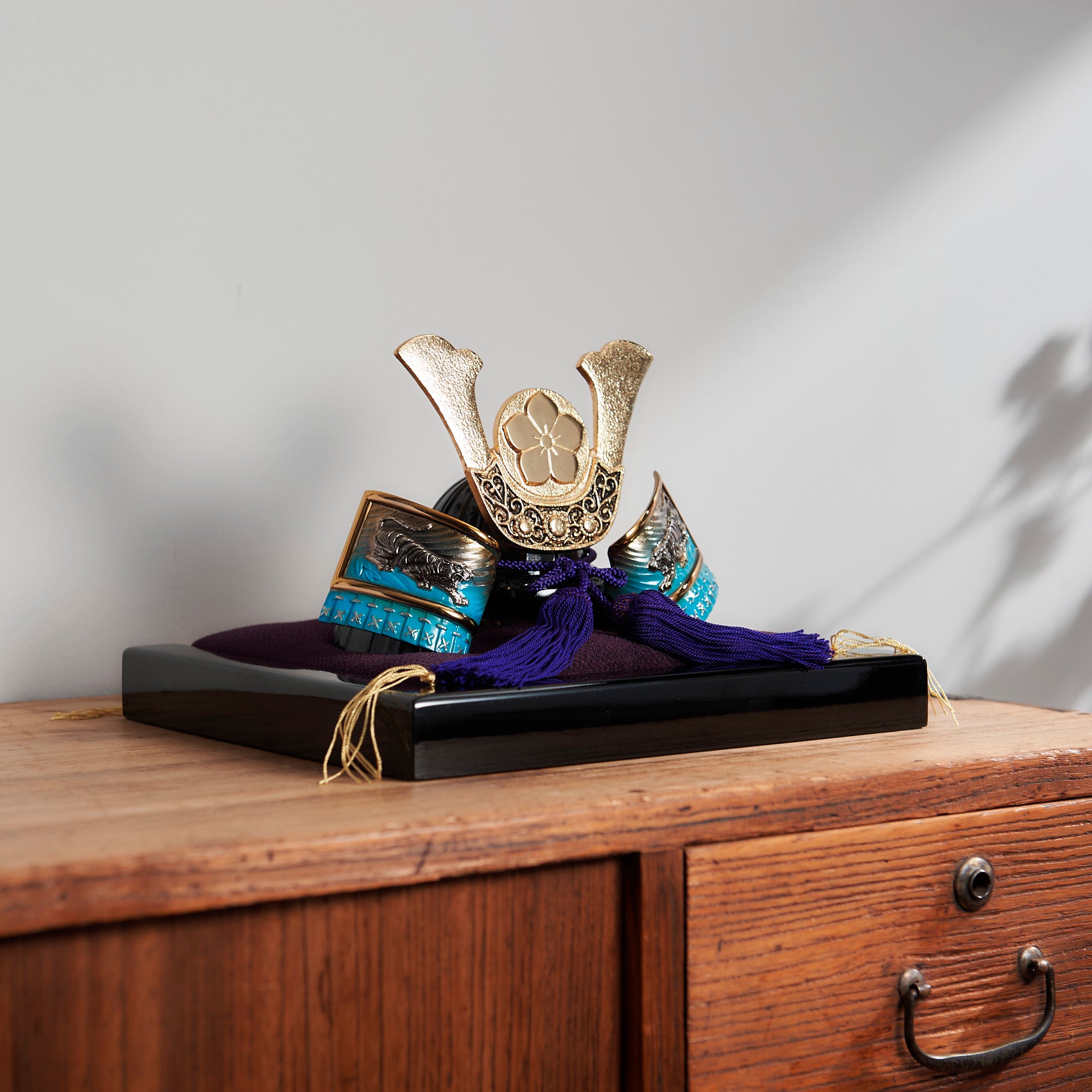

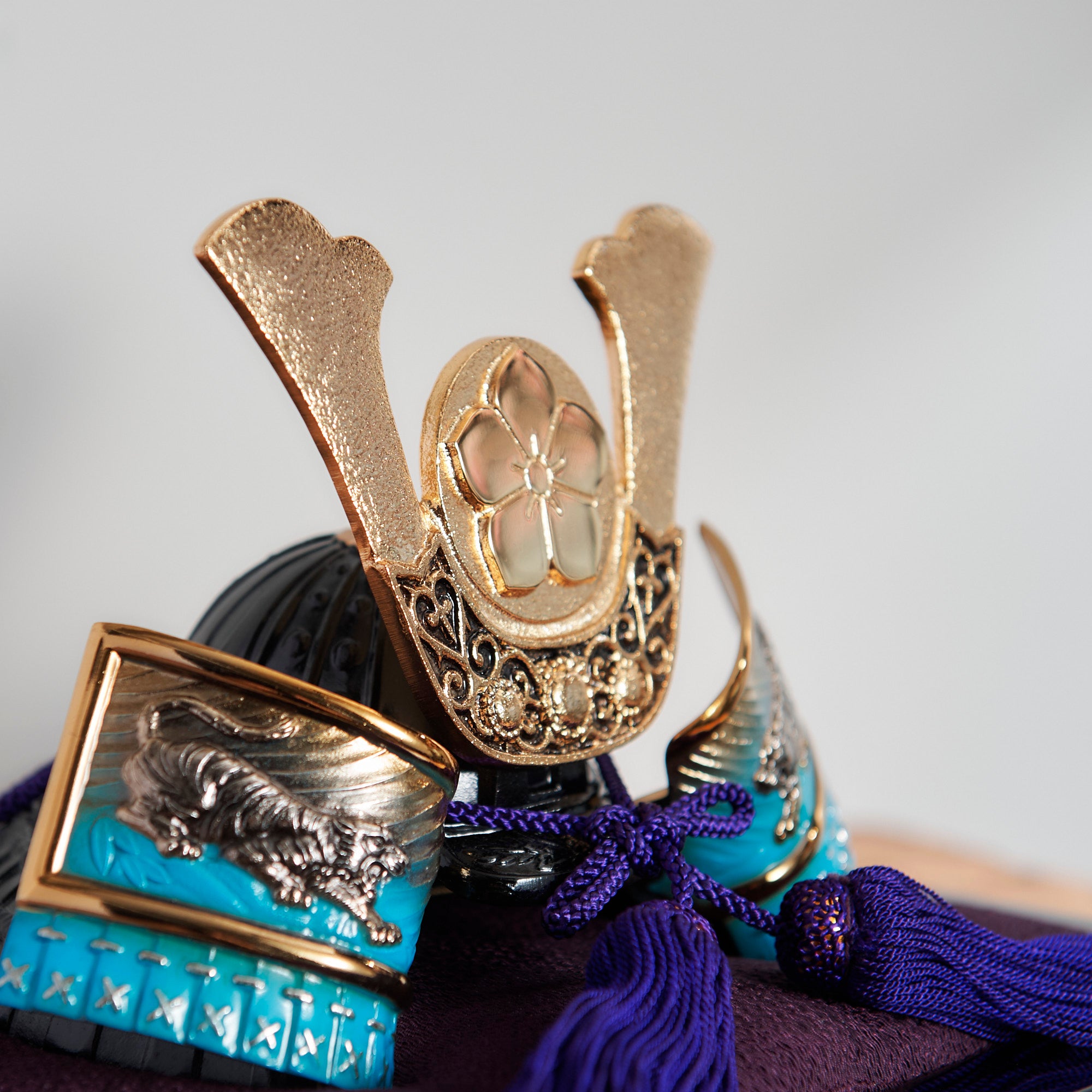
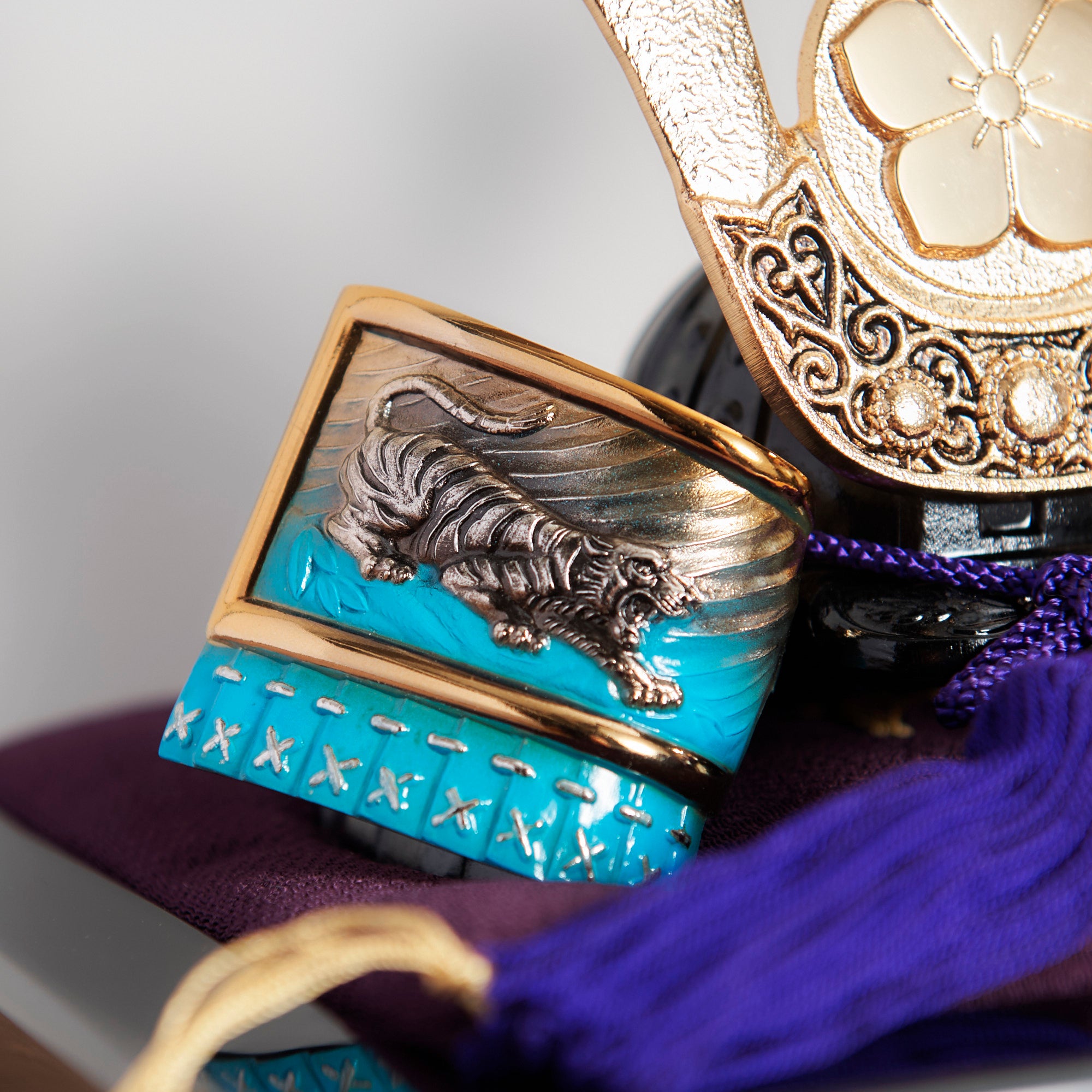
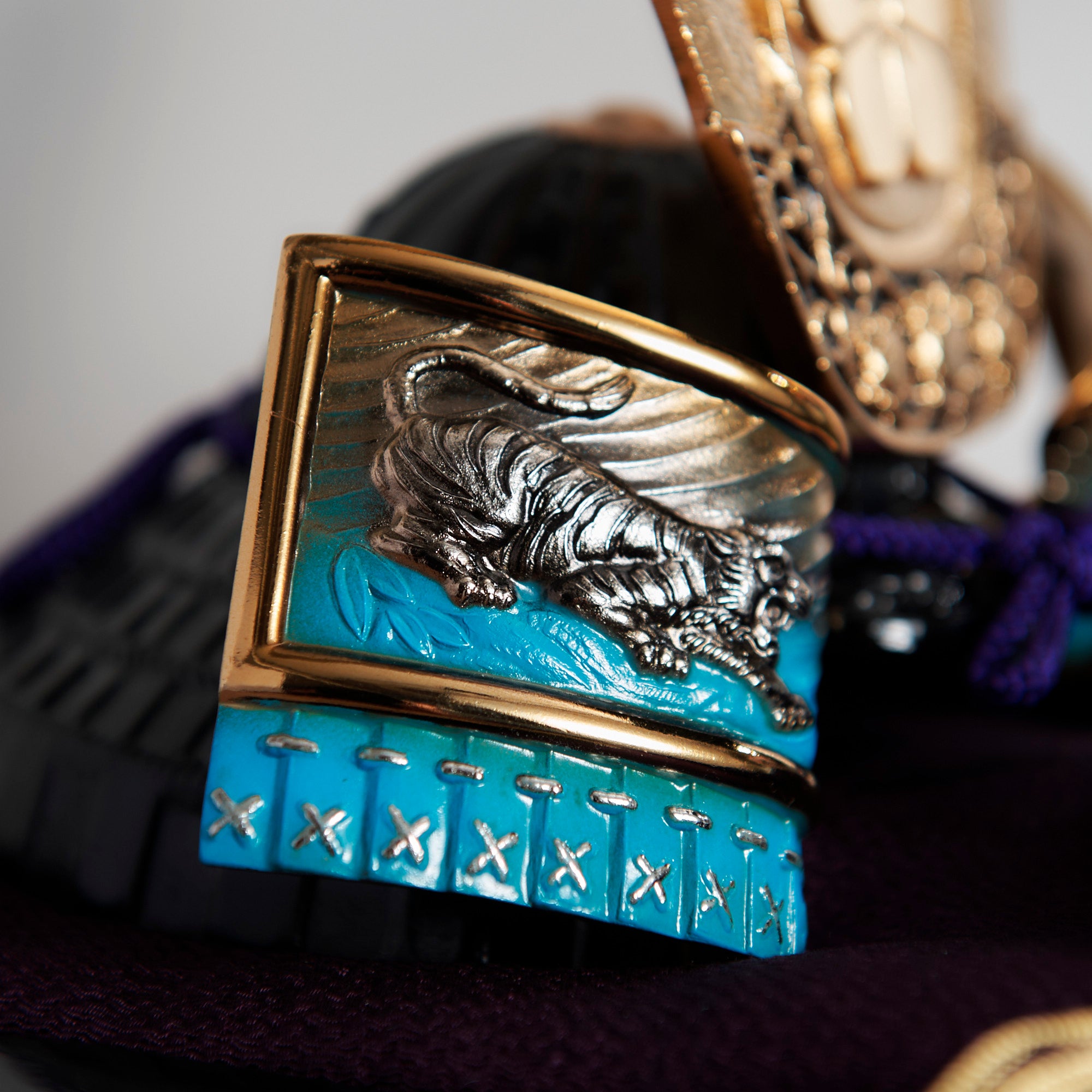


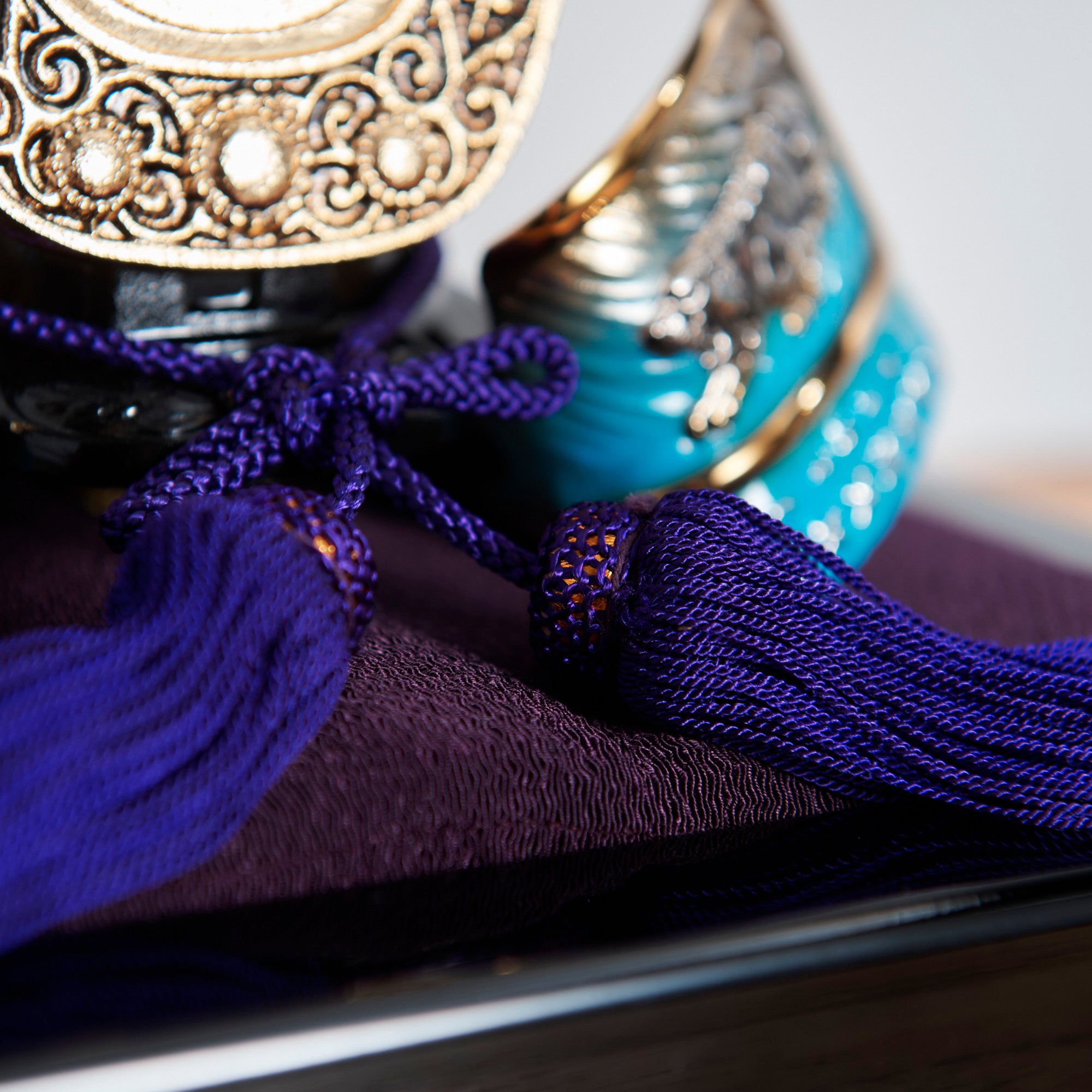

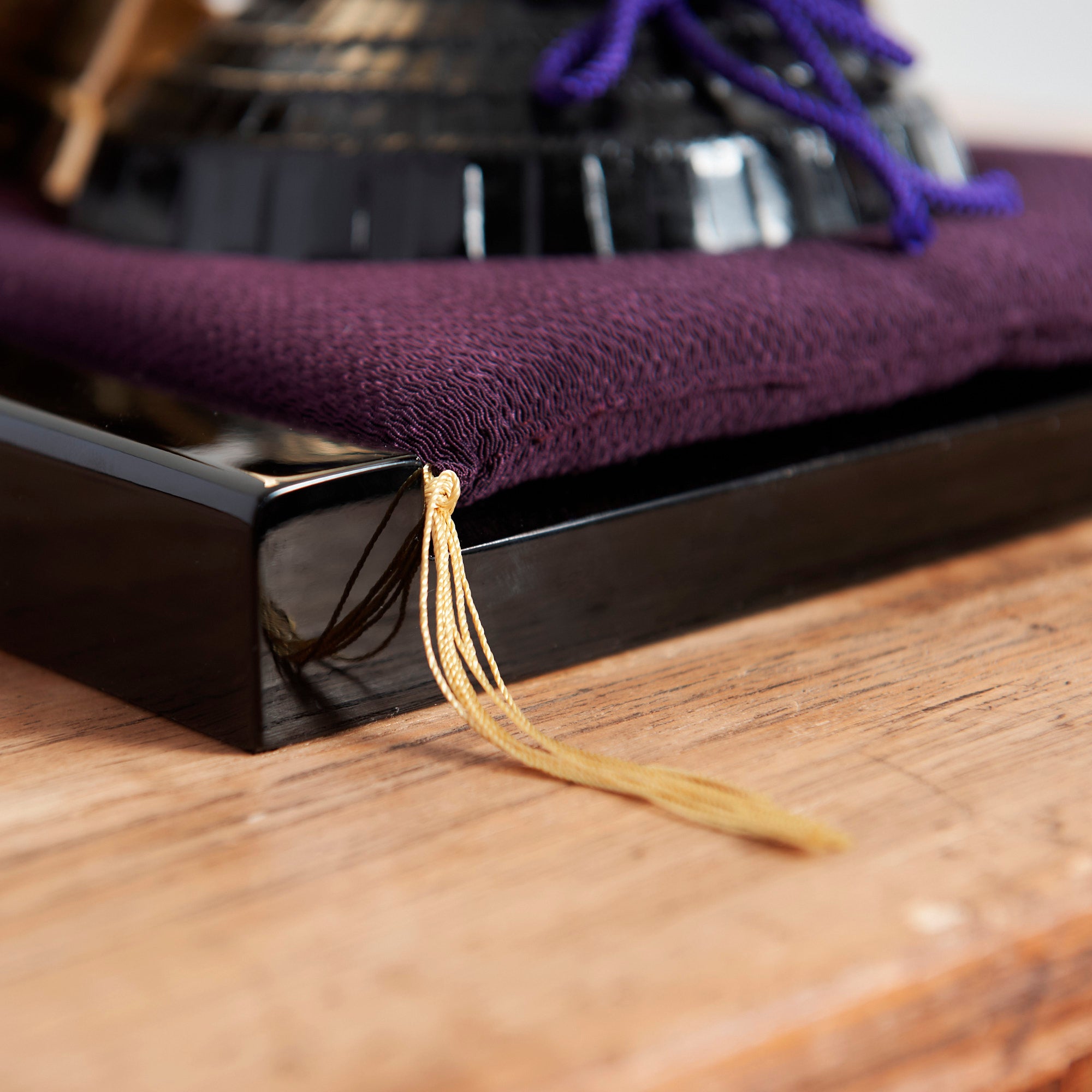
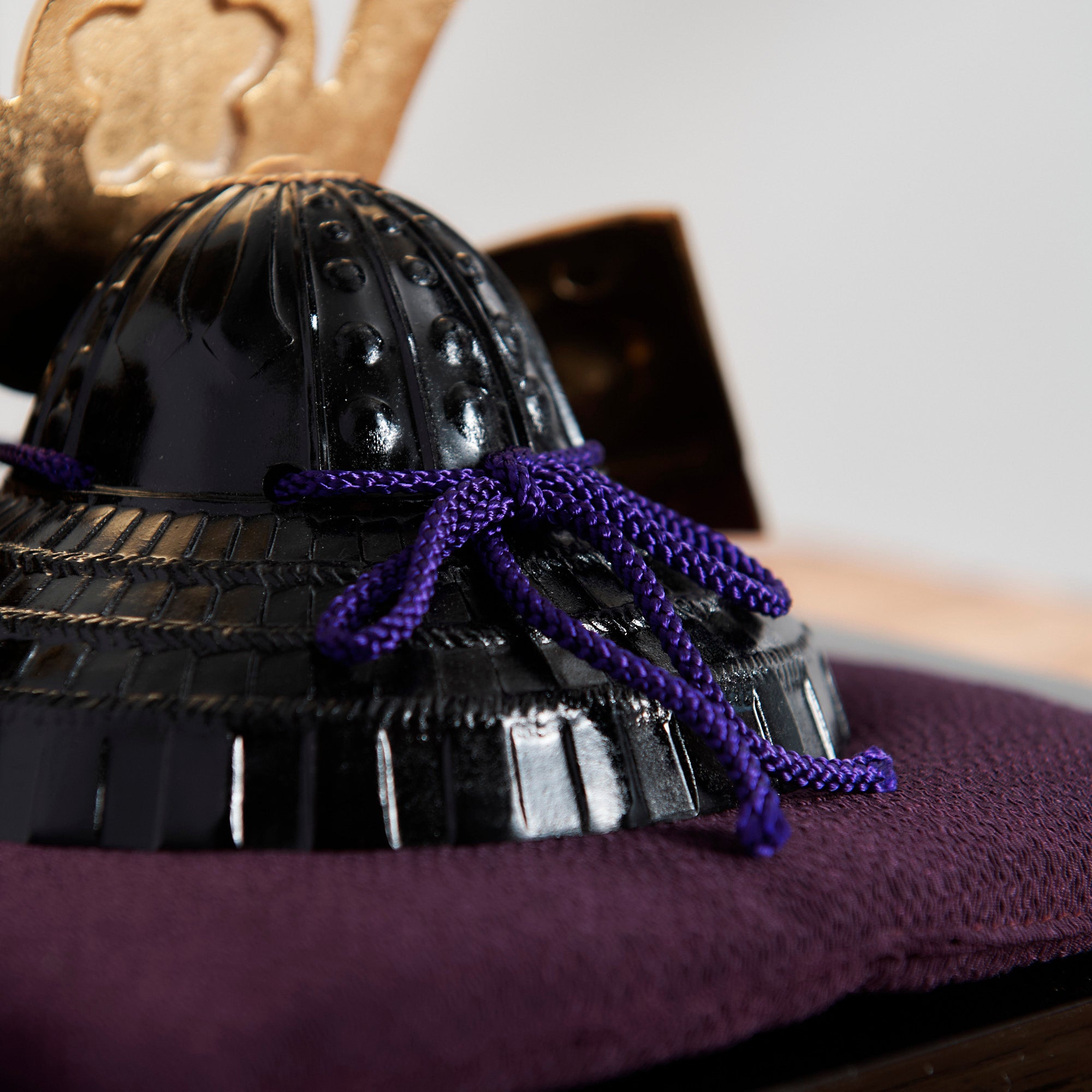
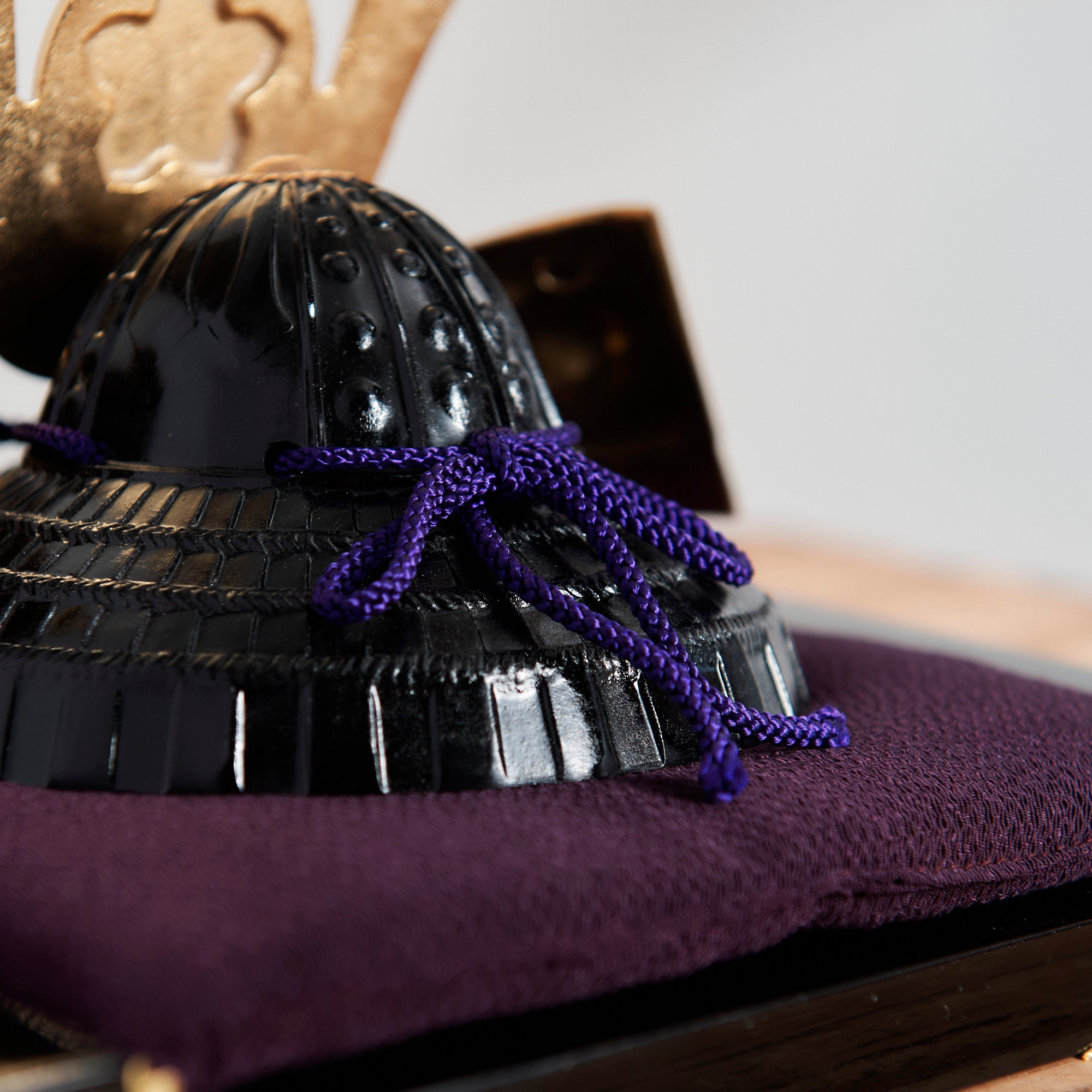

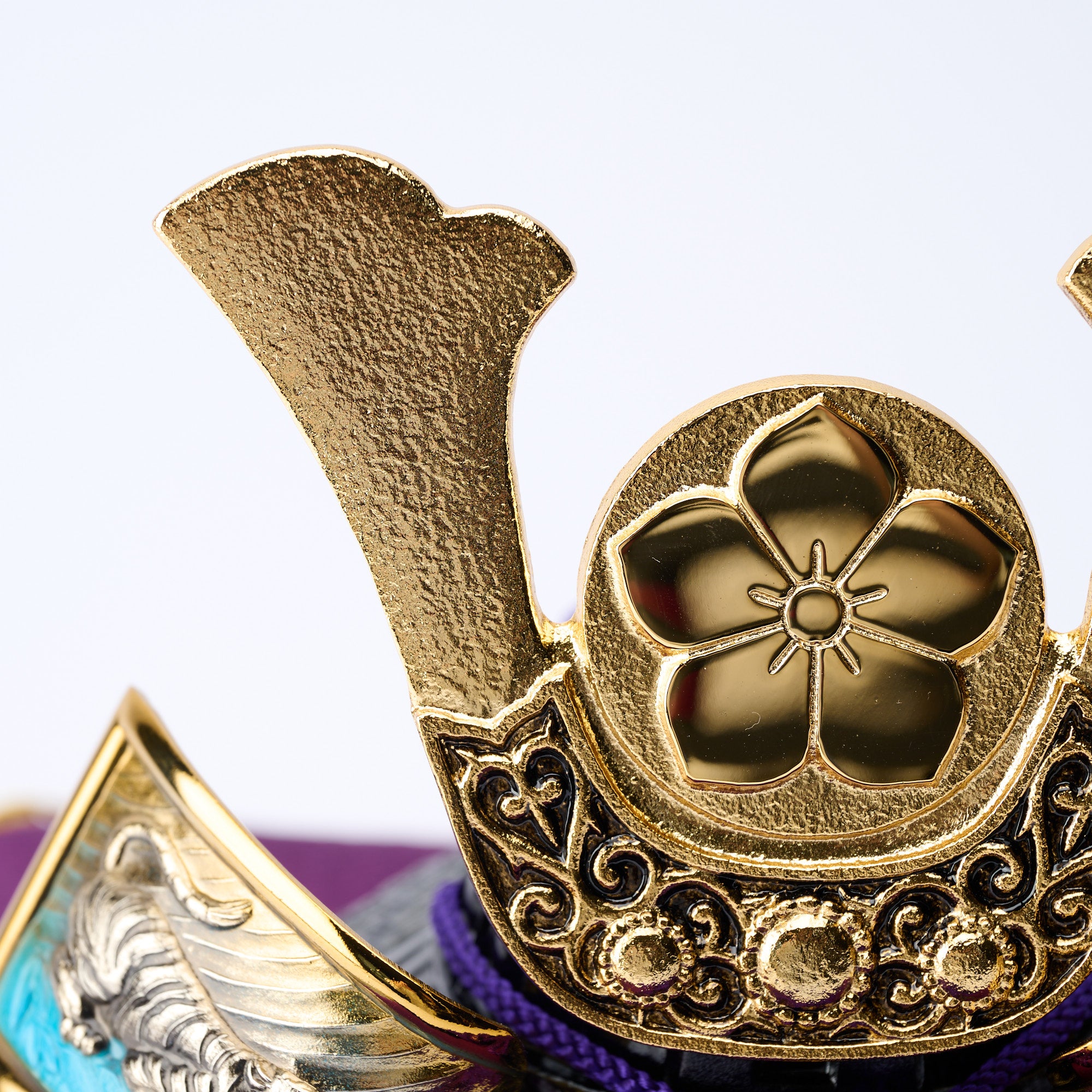
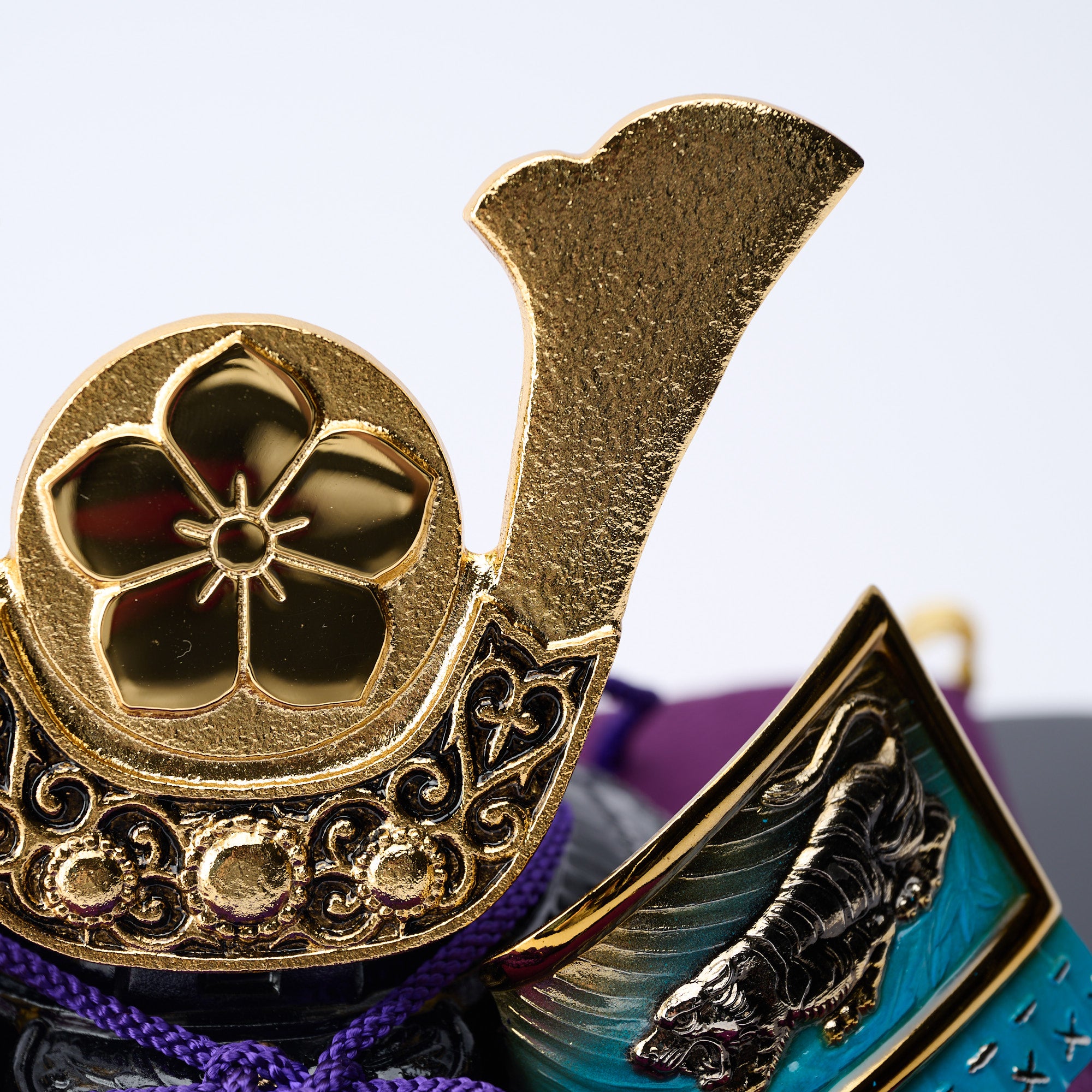
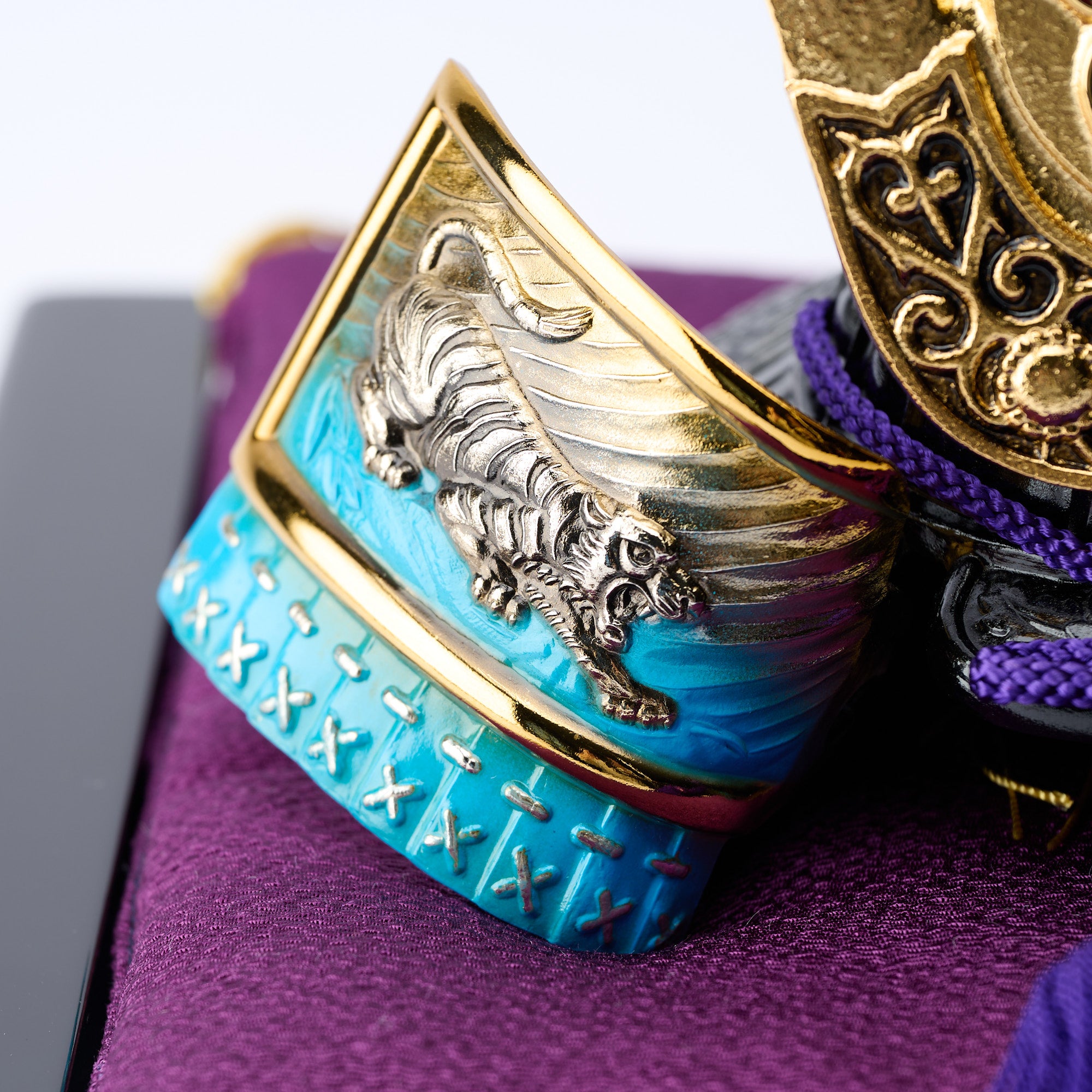
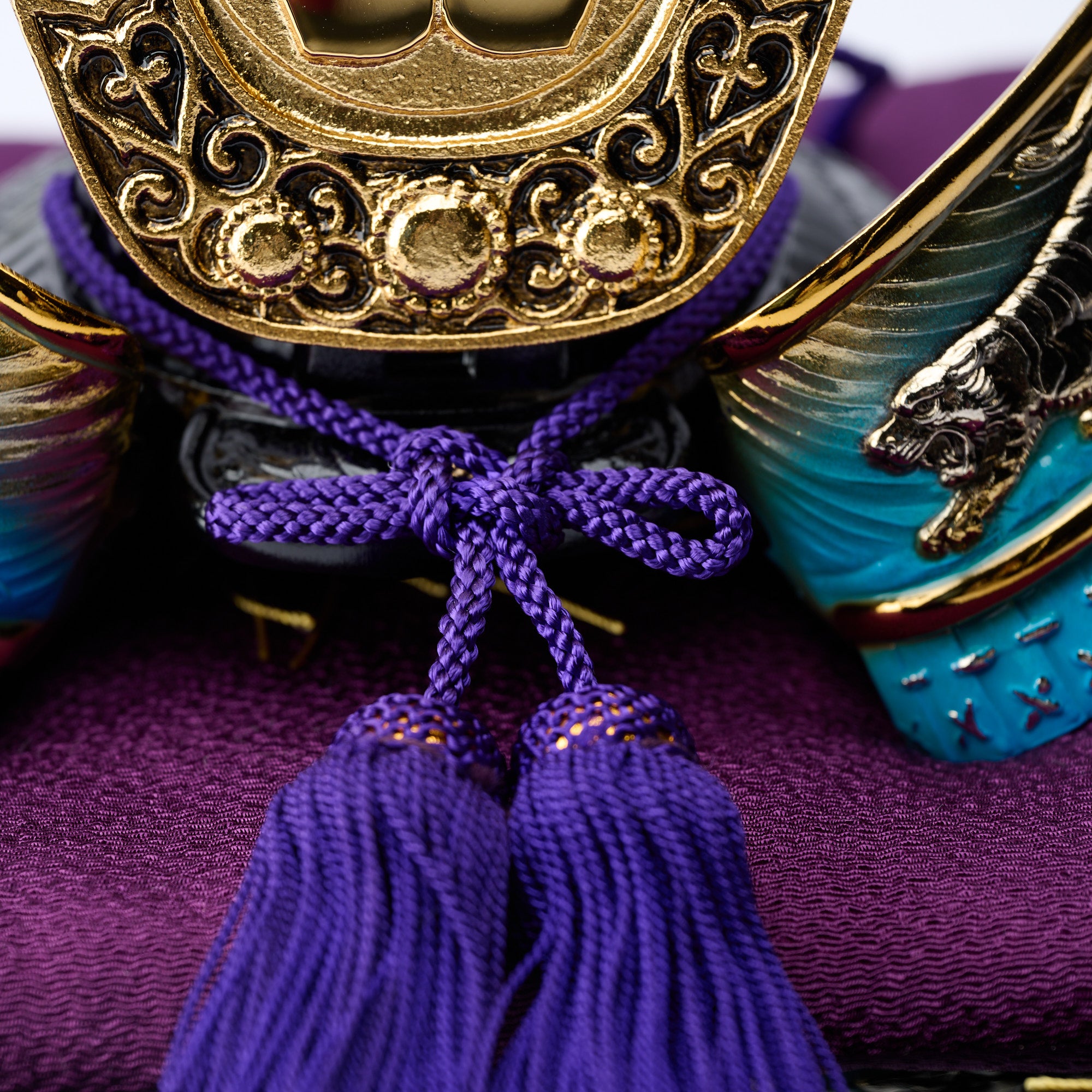
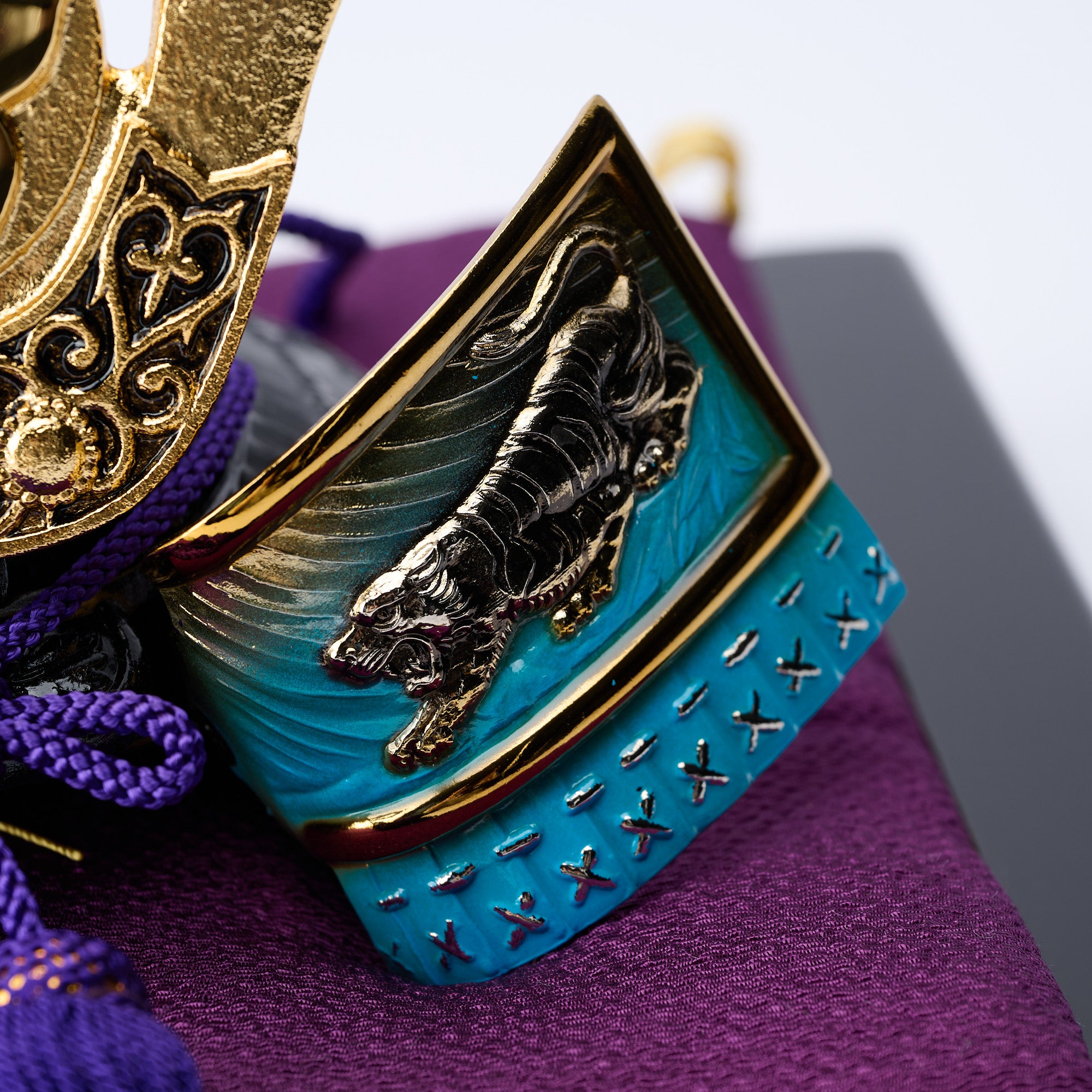
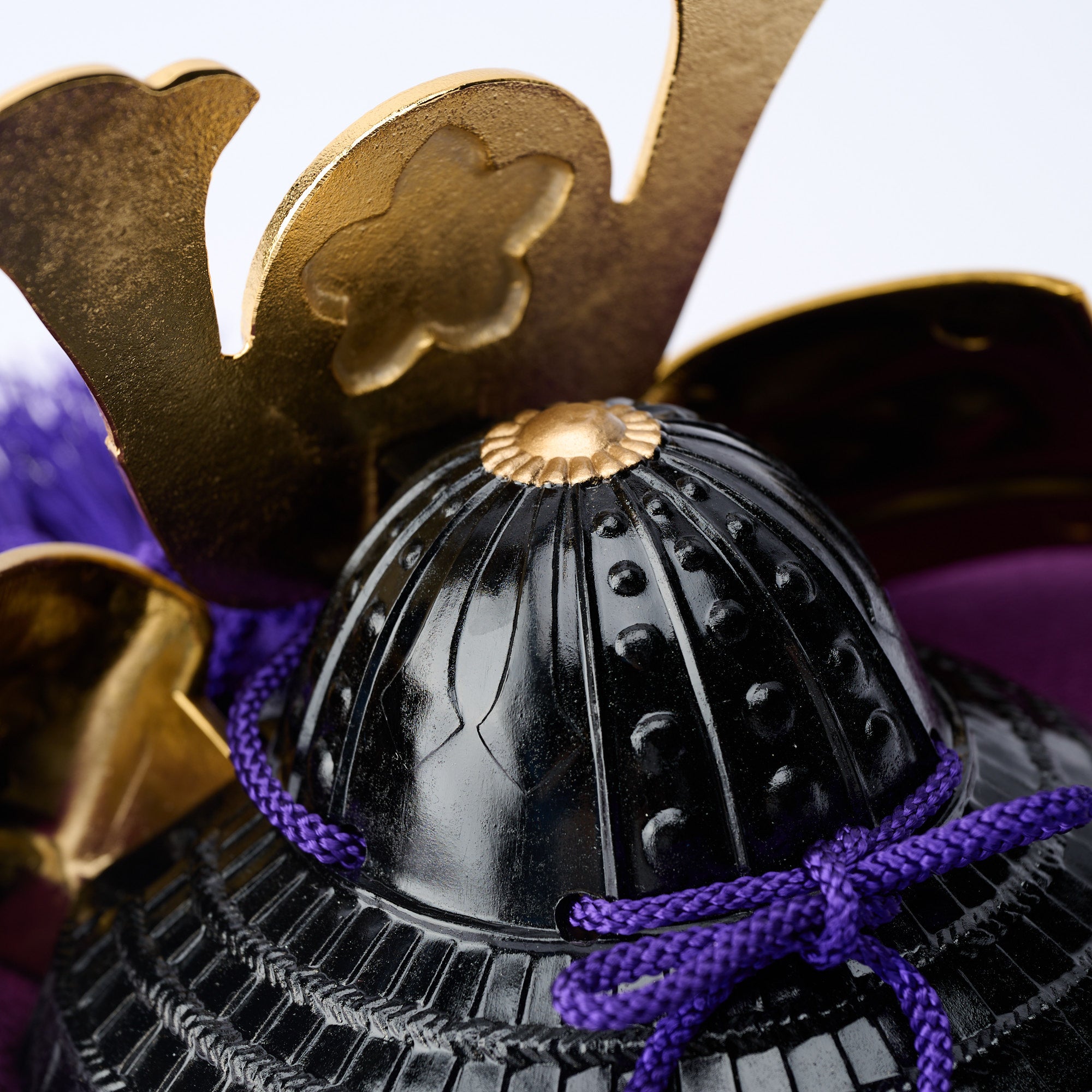
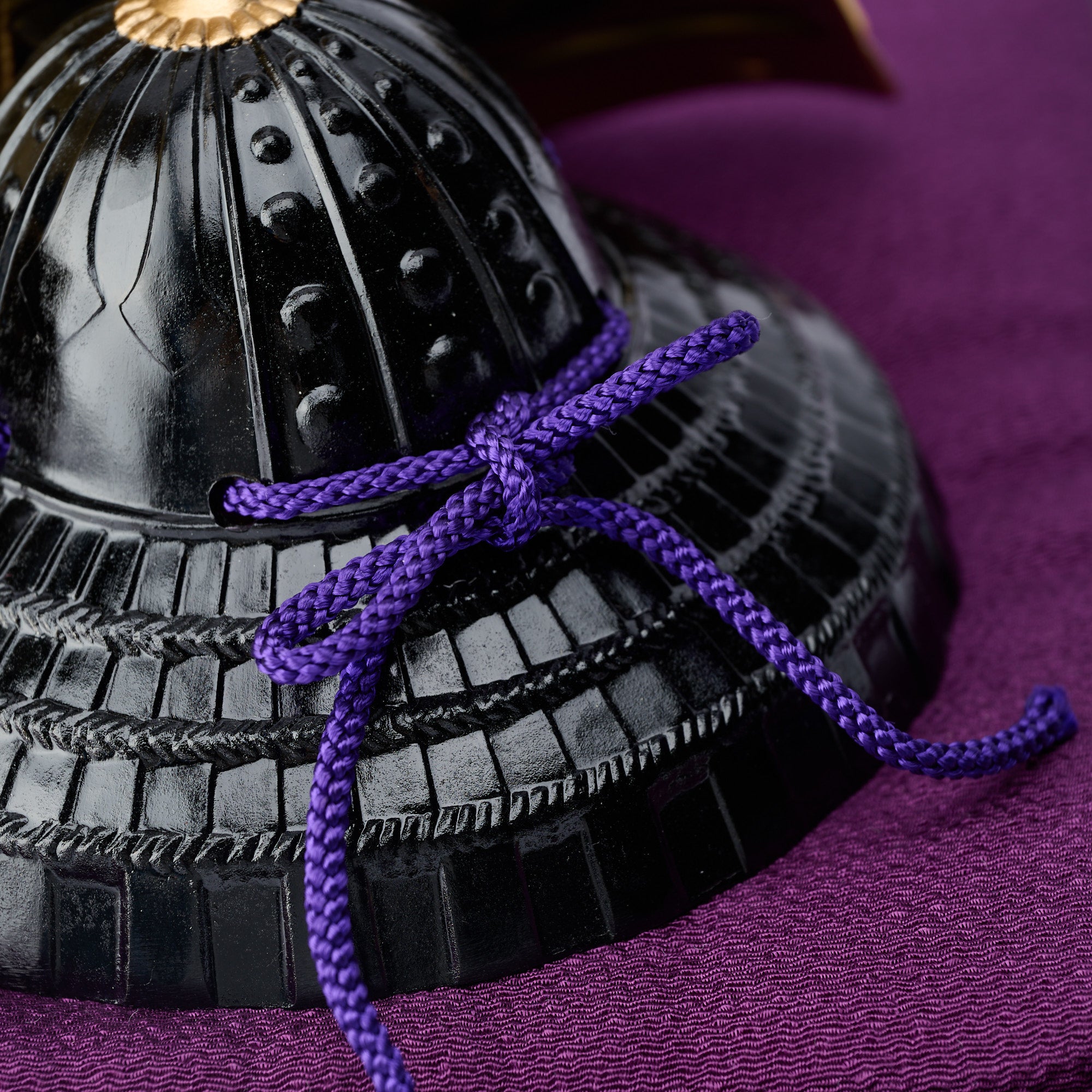
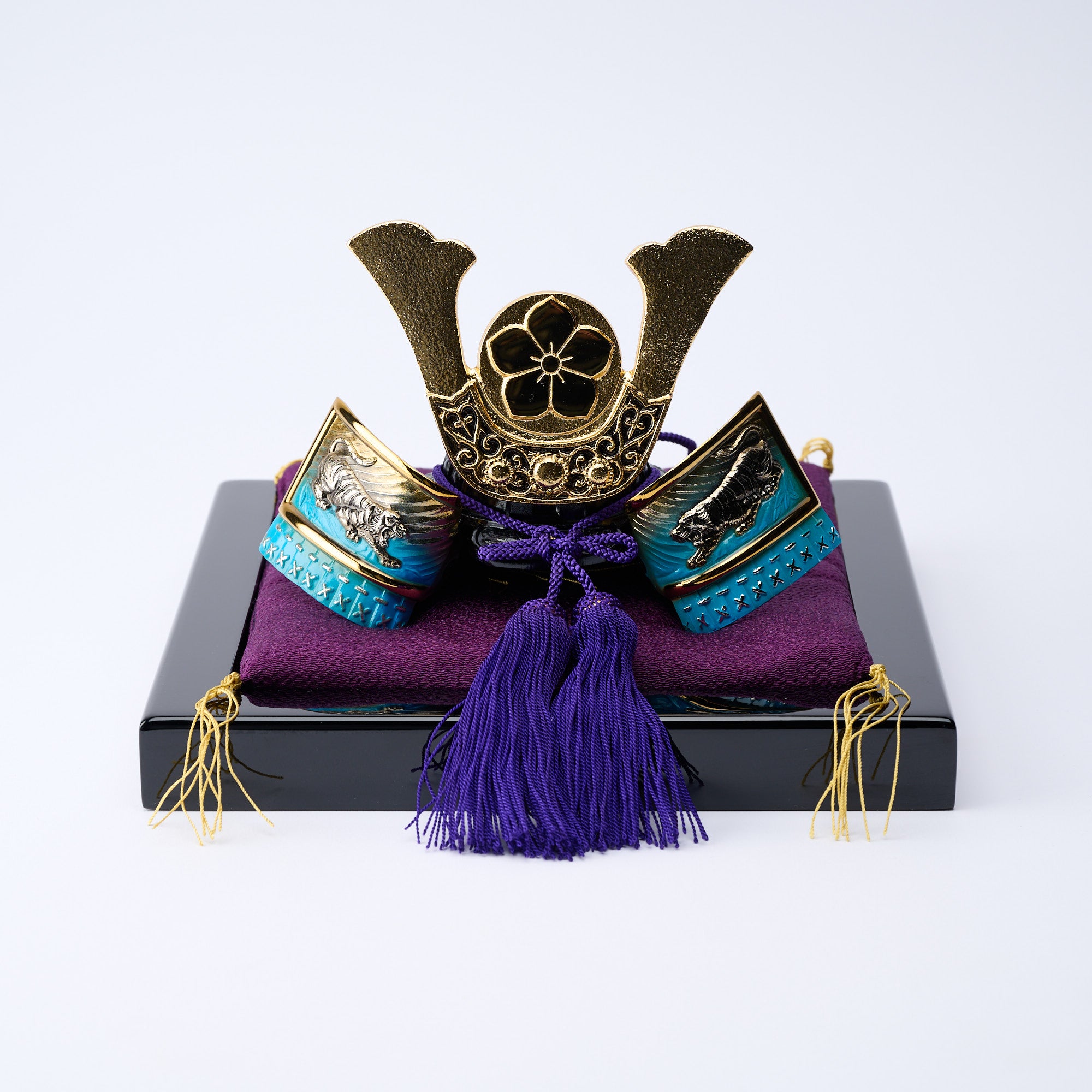
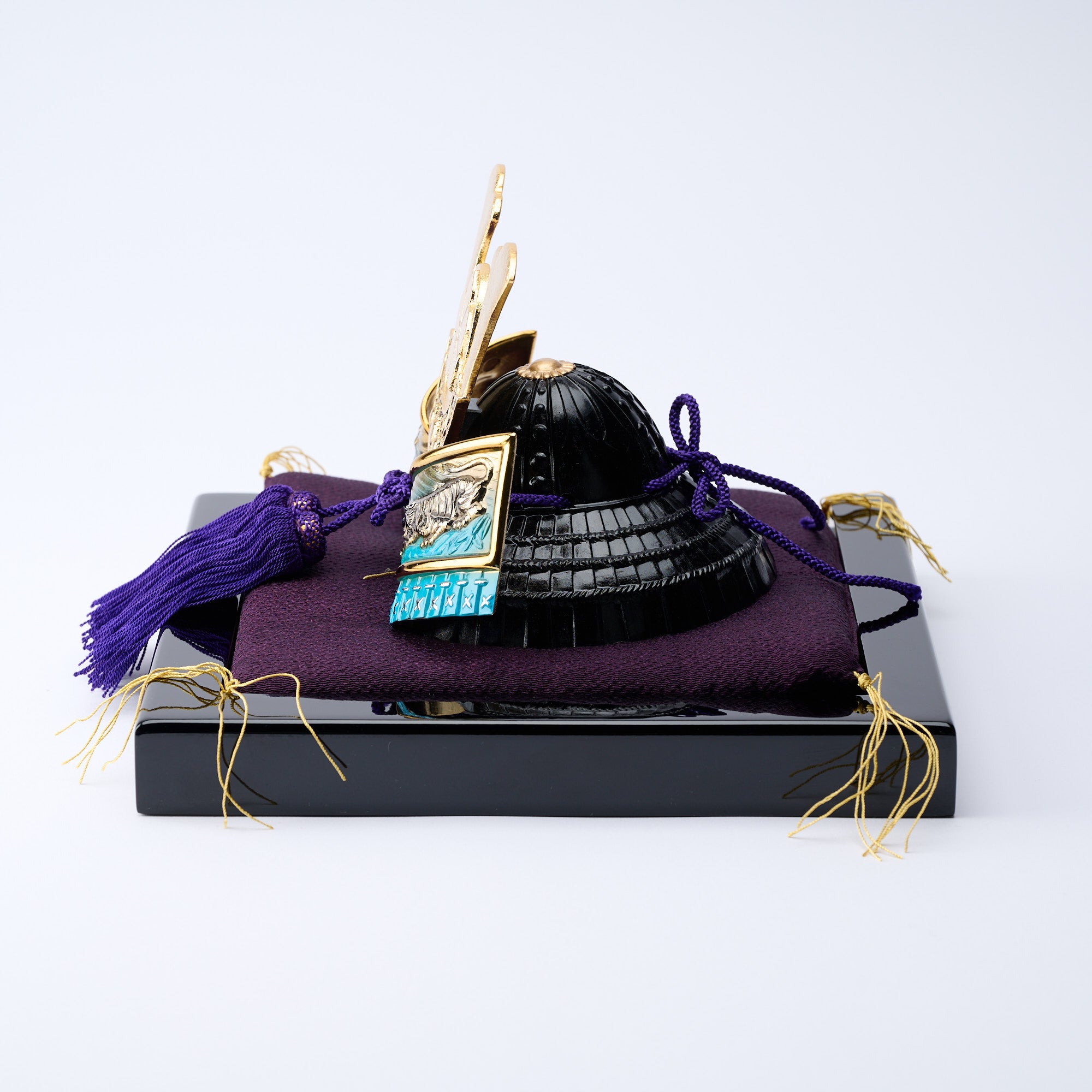
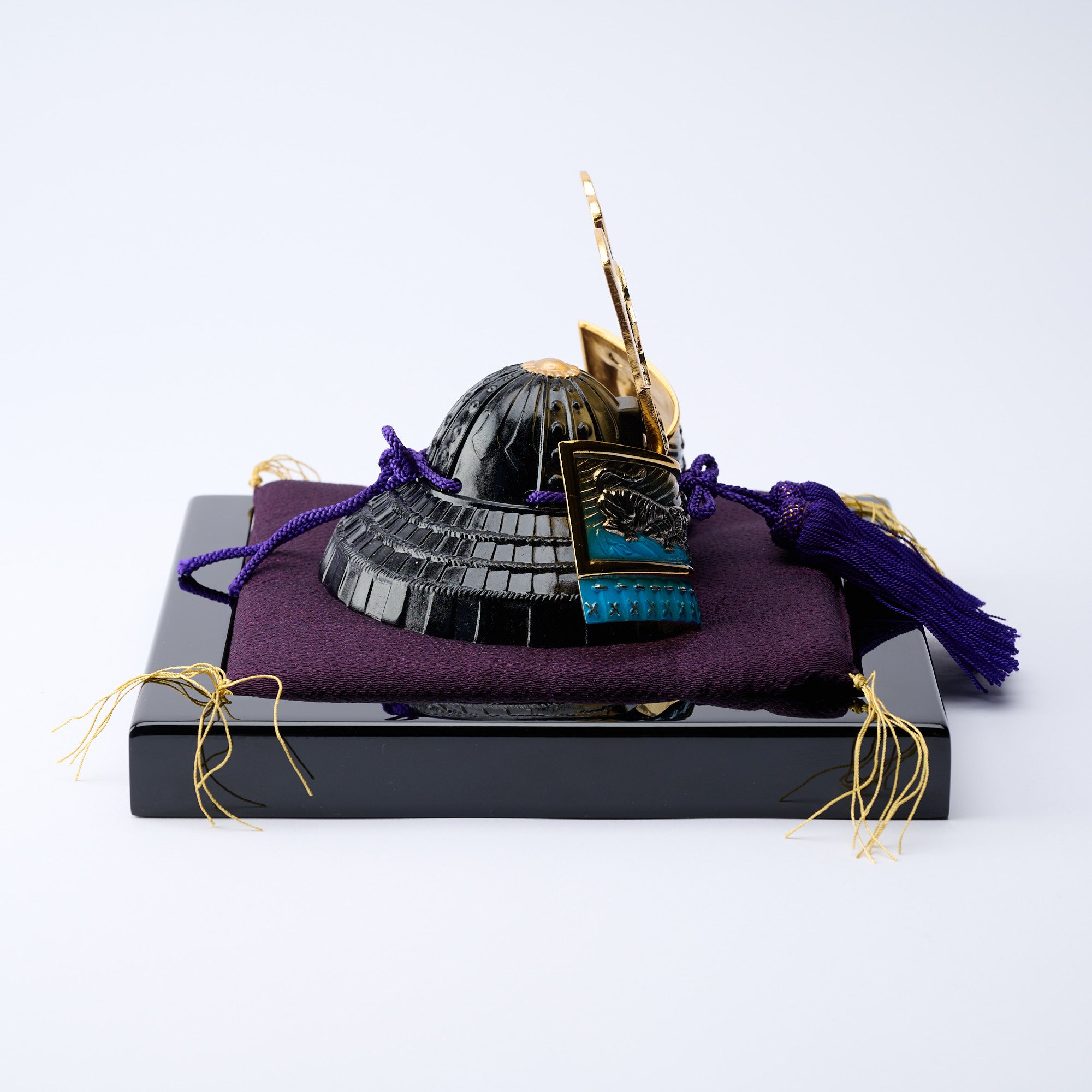
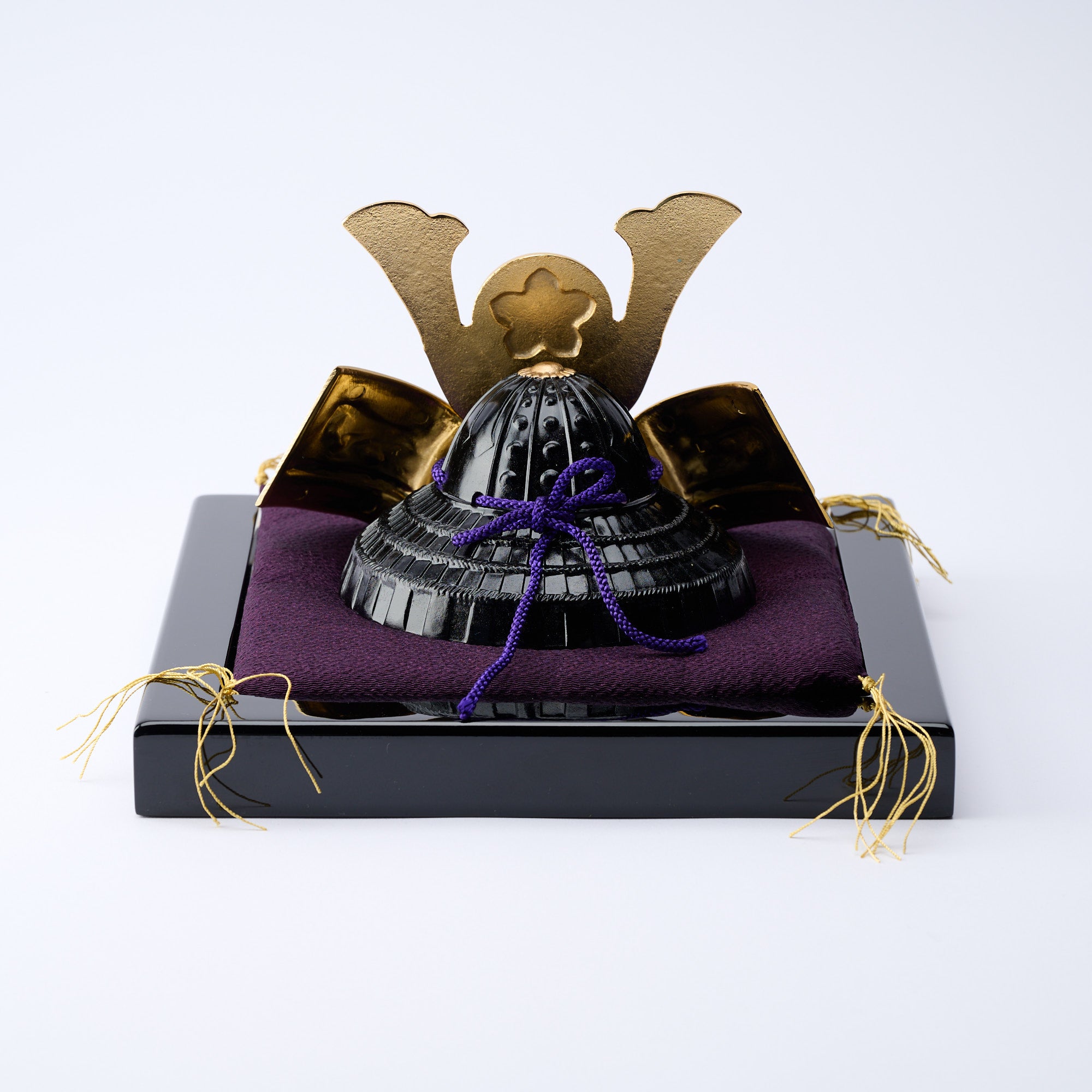
Akechi Mitsuhide Kabuto Samurai Helmet Ornament
Estimated Shipping Widget will be displayed here!
This kabuto samurai helmet ornament draws inspiration from the kabuto of Akechi Mitsuhide, a celebrated military commander and feudal lord during the Sengoku (1467–1590 CE) and Azuchi–Momoyama (1576–1603 CE) periods. The metal surface, with its three-dimensional curves and substantial presence, is adorned with finely engraved patterns, including a tiger rendered in vivid detail. The harmonious blend of gold, black, and blue accentuates the ornament’s majestic and luxurious appeal.
Historically, samurai helmets—kabuto in Japanese—provided essential protection in battle and have come to embody the safeguarding of life. This revered symbolism extends to Japan's Tango-no-Sekku, or Boys’ Day, celebrated each May 5. On this day, families proudly display kabuto ornaments in their homes to wish for their children’s well-being, robust health, and flourishing growth.
The striking front embellishment, referred to as the maedate, was meticulously crafted to underscore individuality and assert presence on the battlefield, featuring dynamic depictions of formidable creatures. The maedate bears the Akechi family crest, the kikyo-mon, and has been meticulously polished to a mirror-like finish by master craftsmen. The flared sides are rendered in a soft sky-blue hue reminiscent of the traditional kikyou-mon emblem.
The elegantly understated display stand offers a refined backdrop, while its deep jet-black finish artfully highlights the kabuto. Its thoughtfully designed size also makes it ideal for display on decorative shelves or in entryways with limited space.
DETAILS
| Quantity | 1 helmet, 1 cushion, 1 decorative stand |
| Size | L 13.0 cm (5.1 in) x W 19.5 cm (7.7 in) x H 15.0 cm (5.9 in) |
| Weight | 670 g (23.6 oz) |
| Material | Zinc alloy, Brass |
| Package Type | Paper box |
Maker / Brand
Experience the timeless beauty of traditional Takaoka copperware with Gingado.
For over 400 years, Takaoka City in Toyama Prefecture has been at the forefront of Japan's metal industry and has become the heartland of Takaoka copperware. Gingado is one the most well-known and respected manufacturers of this traditional craft and stands renowned for their intricate artistry.
Bring traditional craftwork to your home with beautiful items that blend Japanese culture with modernity from Gingado.
Crafts
Takaoka City in Toyama Prefecture is one of the leading metal industry towns in Japan with a 400-year history. It is known for its metal crafts using copper as the main material, which now accounts for about 90% of the total production in Japan. There are various techniques used to produce Takaoka copperware, including hammering, casting, and engraving. Craftsmen in Takaoka are highly skilled and use their skills to create beautiful and functional objects ranging from tea ceremony utensils to decorative vases.
Choose options
























Estimated Shipping Widget will be displayed here!
Samurai Helmets
Samurai helmets, known as kabuto, are traditional Japanese headpiece originally crafted to protect warriors in battle. In Japan, the kabuto not only served as protection but also symbolized a samurai's dignity and individuality.
This symbolism lives on in Tango-no-Sekku—also known as Boys’ Day, now celebrated as part of Children’s Day on May 5th—when families display kabuto ornaments in their homes to pray for their children’s health, strength, and safety.
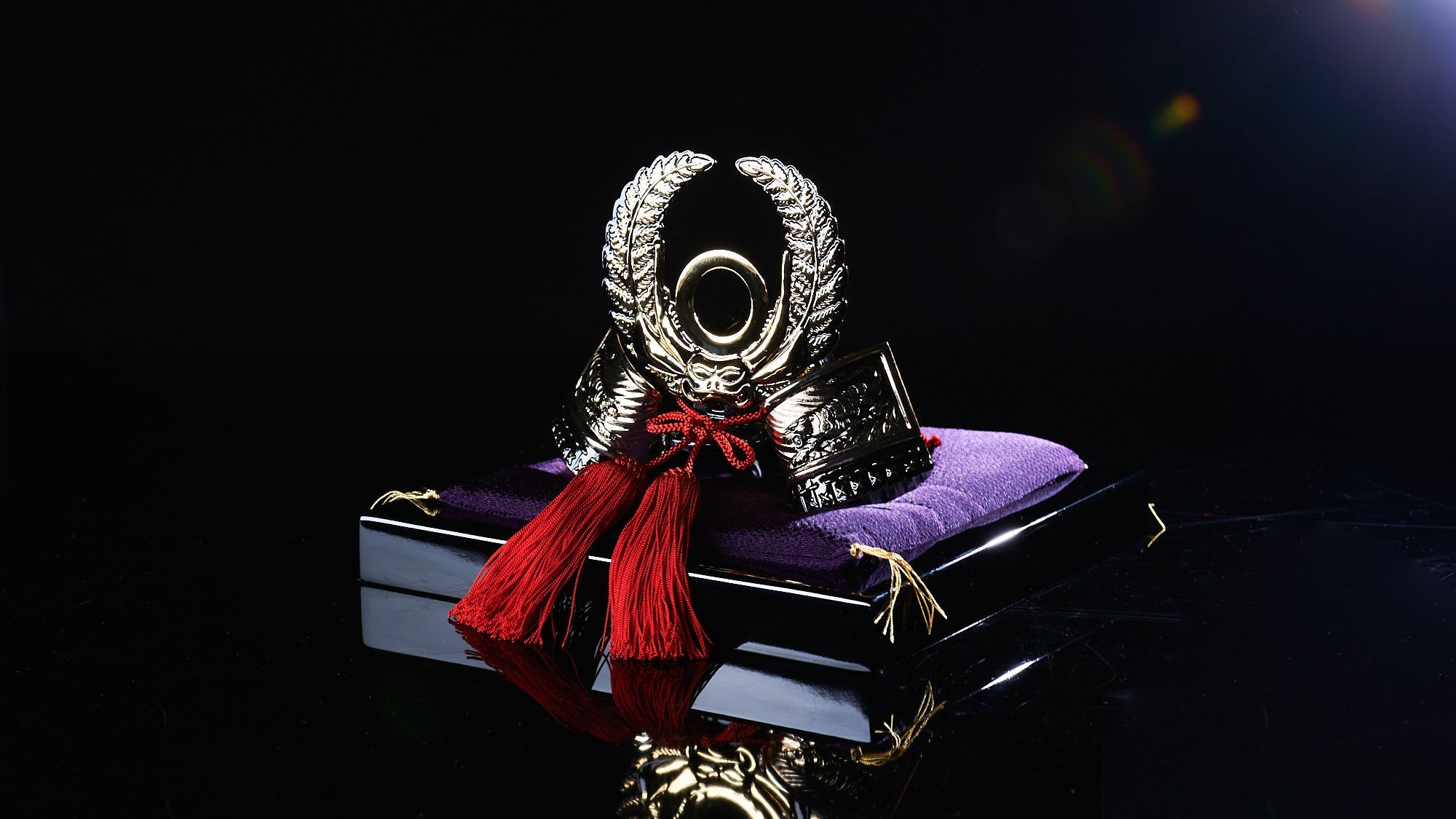
May Festival Dolls
May Festival Dolls are dolls used to celebrate Boys' Day. The tradition of Boys' Day originated in the Nara period (710 CE - 794 CE). By the Edo period (1603 CE - 1868 CE), May 5th had become a holiday and was established as Tango-no-Sekku. During this period, the festival became widely celebrated among the common people of Edo, and dolls began to be used as decorations.
The placement of these dolls signifies the family's collective celebration of a boy's birth, embodying hopes for the child to avoid illnesses, accidents, and other misfortunes, and to grow up strong and healthy. Armors and helmets are displayed as talismans for bodily protection, expressing wishes for their safety, health, and robust growth.

Guide to Japanese Kabuto Samurai Helmet Ornaments

On Tango-no-Sekku, We Celebrate the Health of Our Growing Boys!
